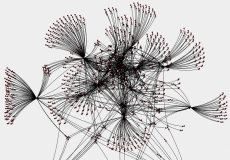The CPD Blog is intended to stimulate dialog among scholars and practitioners from around the world in the public diplomacy sphere. The opinions represented here are the authors' own and do not necessarily reflect CPD's views. For blogger guidelines, click here.

How public diplomats can counter the online presence of media mujahedeen.
Current challenges
To meet the challenges of the 21st century, the approach to public diplomacy will increasingly focus on smart networks of influencers who can convene, connect and mobilize communities. This collaborative approach will support and aggregate the impact of smart, committed individuals around the world.
Partnership, cooperation, and collaboration are recognized by most, if not all, as an important part of 21st century public diplomacy. One important challenge in developing a more collaborative public diplomacy is the need to identify the opportunities and resources to put the collaborative aspiration into action.
This task might be simplified if we recognize the bureaucratic infrastructure as a series of connections – or networks. The task is then to map that network and recognize potential areas of common experience and opportunity for collaboration.
Written by: Gerard Lemos and Ali Fisher

We have been on the cusp of the network phase in Public Diplomacy for some time now, but as yet we have not fully crossed the threshold and adopted the operating model of a network based approach.
John Arquilla's recent article in Foreign Policy outlines the impact the changing operational environment is having on US military operations:
The response by individuals using Twitter to the Iranian election provides important perspectives for the scholarship and practice of Public Diplomacy.
Since last June’s election in Iran, updates of developments have appeared on Twitter alongside messages of support for protesters and celebratory tweets when websites from one side or the other were taken down. This spawned a number of press articles focusing on Iran’s Twitter Revolution.
John Worne’s International Relations Positioning Spectrum (IRPS), and Nick Cull’s response provide interesting perspectives on... >
Pages
POPULAR ARTICLES
-
June 5
-
June 18
-
June 6
-
June 5
-
May 8
-
June 19
-
May 15
-
June 11
Featured Blogger
Join the Conversation
Interested in contributing to the CPD Blog? We welcome your posts. Read our guidelines and find out how you can submit blogs and photo essays >.








